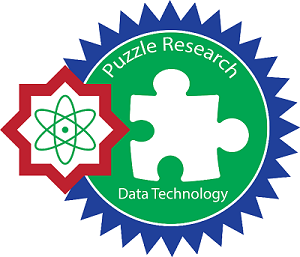ADDITIONAL MENU
The Use of Large Databases for Diagnosing Human Diseases at Early Stage
Abstract
The purpose of this article is to demonstrate the ability of the Eidos intellectual system to recognize human diseases at an early stage by processing large databases containing signs of diseases. To study the signs of diseases, it is proposed to use an automated system-cognitive analysis implemented in the Eidos intellectual system. Automated system-cognitive analysis extracts information from large databases and forms knowledge from them that makes it possible to recognize human diseases. In the process of forming models, the amount of information is calculated in the value of the factor by which the modeling object will pass under its influence to a certain state corresponding to the class. This allows for comparable and correct processing of heterogeneous information about observations of the object of modeling, presented in different types of measuring scales and different units of measurement. The results of recognition of the following diseases were obtained with high reliability: chronic kidney disease, lung cancer, breast cancer, liver disease, risks of developing diabetes and stroke. The results of the study can be applied in medical institutions in many countries, since the Eidos system is freely available on the Internet.
Keywords
Human diseases Large databases Intelligent System Eidos Repository Features
Full Text:
PDFReferences
Gandomi, A. H.; Chen, F.; Abualigah, L. Big Data Analytics Using Artificial Intelligence. Electronics. 2023, 12, 957. https://doi.org/10.3390/electronics12040957
Thakur, S, Rim, T. H., Ting, D. S. J., Hsieh, Y-T. and Kim, T-I. (2023) Editorial: Big data and artificial intelligence in ophthalmology. Front. Med. 10:1145522. DOI: 10.3389/fmed.2023.1145522
Breast cancer symptoms: What are the early signs you should look out for? [Electronic resource]. Access mode: https://www.independent.co.uk/life-style/health-and-families/breast-cancer-symptoms-signs-treatment-b2264268.html
James, M. T., Hemmelgarn, B. R., Tonelli, M. Early recognition and prevention kidney disease. Lancet, 2010; vol 375, pg. 1296.
Gu, Y., Xu, W., Lin, B., et al. (2022). Deep learning based on ultrasound images assists breast lesion diagnosis in China: a multicenter diagnostic study. Insights into Imaging, 13, 124. 2022.
Zheng, D., He, X., & Jing, J. (2023). Overview of Artificial Intelligence in Breast Cancer Medical Imaging. Journal of Clinical Medicine, 12(2), 419. DOI: 10.3390/jcm12020419.
Singh, V. K., Rashwan, H. A., Romani, S., et al. Breast tumor segmentation and shape classification in mammograms using generative adversarial and convolutional neural network. Expert Syst. Appl. 2020, 139, 112855.
Loku, L., Fetaji, B., & Krsteski, A. (2018). Automated Medical Data Analyses of Diseases Using Big Data. Knowledge - International Journal, 28(5), 1719–1724. https://doi.org/10.35120/kij28051719L.
Zeng, N., Clawson, K., Peng, Y. Editorial: Data-Enabled Intelligence for Medical Technology Innovation, Volume I. Front Med Technol. 2022 Jan 14; 3: 841150. DOI:10.3389/fmedt.2021.841150.
Rebolledo-Mendez, J.D. and Vaishnav, R. (2022). Artificial intelligence in precision oncology: The way forward. International Journal of Molecular and Immuno Oncology, 7(3), 77-81. DOI: 10.25259/IJMIO_21_2022.
Lutsenko, E. V. Design and development of intelligent information systems: textbook. - Krasnodar: VTsSKI "Eidos," 2020. – 529 pages.
Chalamet, M. Brain Cancer Data. 2021. [Electronic resource]. Access mode: https://www.kaggle.com/ datasets/michaelchalamet/brain-cancer-data.
Dua, D. and Graff, C. UCI Machine Learning Repository [http://archive.ics.uci.edu/ml]. Irvine, CA: University of California, School of Information and Computer Science. 2019.
Al-Ansi, A. M., Jaboob, M., & Awain, A. M. S. B. (2023). Examining the mediating role of job satisfaction between motivation, organizational culture, and employee performance in higher education: A case study in the Arab region. Educ Sci. Manag, 1(1), 30-42.
Lutsenko, E. V. Universal cognitive analytical system “Eidos”. Monograph (scientific edition). Krasnodar: Kuban State Agrarian University after I. T. Trubilina; 2014. 600 p. http://elibrary.ru/item.asp?id=22401787.
Lutsenko, E. V. Synthesis of adaptive intelligent measuring systems using ASC analysis and the Eidos system and system identification in econometrics, biometrics, ecology, pedagogy, psychology and medicine. Polythematic network electronic scientific journal of the Kuban State Agrarian University (Scientific journal of KubGAU) [Electronic resource]. - Krasnodar: Kuban State Agrarian University after I. T. Trubilina, 2016. - No. 02 (116). P. 1-60. - IDA [article ID]: 1161602001. http://ej.kubagro.ru/2016/02/pdf/01
Lutsenko E.V. Laboratory workshop on intelligent information systems: Textbook for students of the specialty "Applied Informatics" and other economic specialties. 2nd ed., revised and additional - Krasnodar: Kubanskiy Gosudarstvennyy Agrarnyy Universitet I.m. I. T. Trubilina, 2006. – 318 p. http://elibrary.ru/item.asp?id=21683721
Al-Ansi, A. M., Almadi M., Ichhpujani P., Ryabtsev V. Eidos System Prediction of Myopia in Children in Early Education Stages. Jurnal Ilmiah Teknik Elektro Komputer dan Informatika (JITEKI), Vol. 9, No. 2, June 2023, pp. 411-419. ISSN: 2338-3070, DOI: 10.26555/jiteki.v9i2.26292.
Lutsenko, E. V. Design and Development of Intelligent Information Systems. Krasnodar: VTsSKI “Eidos”, 2020. – 529 pages.
Al-Ansi, A. M., & Fatmawati, I. (2023). Integration of ICT in higher education during Covid-19 pandemic: a case study. International Journal of Learning and Change, 15(2).
Lutsenko, E. V. Intelligent information systems: Textbook for students of specialty: 351400 "Applied informatics (by industry)." - Krasnodar: KubGAU. 2004. – 633 pages.
Lutsenko, E. V. Information and automated control systems: textbook/ E. V. Lutsenko, V. I. Loiko, V. N. Laptev; commonly. Ed. E. V. Lutsenko. - Krasnodar: KubGAU, 2015. – 450 pages.
Orlov, A. I. Analysis of data, information and knowledge in systemic fuzzy interval mathematics: scientific monograph / A. I. Orlov, E. V. Lutsenko. - Krasnodar: KubGAU, 2022. – 405 p.
Cailhier, J.-F., Nolin L., Hébert M.-J. Thrombotic microangiopathy following renal ischemia and revascularization: apoptosis of endothelial cells in action. Nephrology Dialysis Transplantation, Volume 16, Issue 8, August 2001, Pages 1725–1726, https://doi.org/10.1093/ndt/16.8.1725.
Hammerschmidt, S., Wirtz H. Lung cancer: current diagnosis and treatment. Dtsch Arztebl Int. 2009 Dec; 106(49): 809-18; quiz 819-20. DOI:10.3238/arztebl.2009.0809.
Stapley, S, Sharp, D., Hamilton, W. Negative chest X-rays in primary care patients with lung cancer. Br J Gen Pract. 2006 Aug;56(529):570-3.
Skyler, J. S., Bakris, G. L., Bonifacio, E., Darsow, T., Eckel, R. H, Groop, L, et al. Differentiation of diabetes by pathophysiology, natural history, and prognosis. Diabetes. 2017; 66: 241–55.
Alam, T. M., Iqbal, M. A., Ali, Y., et al. A model for early prediction of diabetes. Informatics in Medicine Unlocked, Volume 16, 2019, 100204, ISSN 2352-9148, https://doi.org/10.1016/j.imu.2019.100204.
Cynthia, Huang, Yizhi, Zhang, Yitian, Hu, Juien, Yang. Visual Analysis and Prediction of Stroke. 36-315 Final Project. [Electronic resource]. Access mode: https://www.stat.cmu.edu/capstoneresearch/spring2021/ 315files/team16.html.
Al-Ansi, A. M. (2022). Reinforcement of student-centered learning through social e-learning and e-assessment. SN Social Sciences, 2(9), 194.
Biswas, M., Kuppili, V., Saba, L. et al. An Artificial Intelligence-Based Bio-Medical Stroke Prediction and Analytical System Using a Machine Learning Approach. Computational Intelligence and Neuroscience, Volume 2022, Article ID 5489084, 9 pages. https://doi.org/10.1155/2022/5489084.
Stoot, L. J., Cairns, N. A., Cull, F., et al. Use of portable blood physiology point-of-care devices for basic and applied research on vertebrates: a review. Conserv Physiol. 2014 Apr 4; 2(1): cou011. DOI: 10.1093/conphys/cou011.
Al-Ansi, A. M., & Al-Ansi, A. (2023). Enhancing student-centered learning through introducing module for STEM development and assessment. International Journal of STEM Education for Sustainability, 3(1), 22-27.
Lu, H., & Yang, S. (Eds.). (2022). Artificial Intelligence and Robotics: 7th International Symposium, ISAIR 2022, Shanghai, China, October 21-23, 2022, Proceedings, Part 2 (Vol. 2). Springer Nature Singapore.
Rebolledo-Mendez, J. D. and Vaishnav, R. (2022). Artificial intelligence in precision oncology: The way forward. International Journal of Molecular and Immuno Oncology, 7(3), 77-81. DOI: 10.25259/IJMIO_21_2022.
Nagaraj, J. Indian Liver Patient Dataset. [Electronic resource]. Access mode: https://www.kaggle.com/datasets/jeevannagaraj/indian-liver-patient-dataset
Lutsenko, E. V., Ryabtsev V. G. Application of automated system-cognitive analysis for predicting risks in the operation of electrical installations in the agro-industrial complex. Polythematic network electronic scientific. 2015. - P. 1-18.
Shen, Y., Shamout, F. E., Oliver, J. R. et al. Artificial intelligence system reduces falsepositive findings in the interpretation of breast ultrasound exams. Nat Commun, 12, 5645 (2021). https://doi.org/10.1038/s41467-021-26023-2
Al-Ansi, A. M., & Al-Ansi, A. (2023). An Overview of Artificial Intelligence (AI) in 6G: Types, Advantages, Challenges and Recent Applications. Buletin Ilmiah Sarjana Teknik Elektro, 5(1), 67-75.
Breast Cancer Wisconsin (Diagnostic) Data Set. [Electronic resource]. Access mode: https://archive.ics.uci.edu/ml/datasets/Breast+ Cancer+Wisconsin+%28Diagnostic%29.
Dua, D. and Graff, C. UCI Machine Learning Repository [http://archive.ics.uci.edu/ml]. Irvine, CA: University of California, School of Information and Computer Science. 2019.
Jabeen, K., Khan, M. A., Alhaisoni, M., et al. Breast Cancer Classification from Ultrasound Images Using Probability-Based Optimal Deep Learning Feature Fusion. Sensors, 2022, 22, 807. https://doi.org/10.3390/s22030807
DOI: http://dx.doi.org/10.24014/ijaidm.v6i2.24525
Refbacks
- There are currently no refbacks.
Office and Secretariat:
Big Data Research Centre
Puzzle Research Data Technology (Predatech)
Laboratory Building 1st Floor of Faculty of Science and Technology
UIN Sultan Syarif Kasim Riau
Jl. HR. Soebrantas KM. 18.5 No. 155 Pekanbaru Riau – 28293
Website: http://predatech.uin-suska.ac.id/ijaidm
Email: ijaidm@uin-suska.ac.id
e-Journal: http://ejournal.uin-suska.ac.id/index.php/ijaidm
Phone: 085275359942
Journal Indexing:
Google Scholar | ROAD | PKP Index | BASE | ESJI | General Impact Factor | Garuda | Moraref | One Search | Cite Factor | Crossref | WorldCat | Neliti | SINTA | Dimensions | ICI Index Copernicus
IJAIDM Stats










